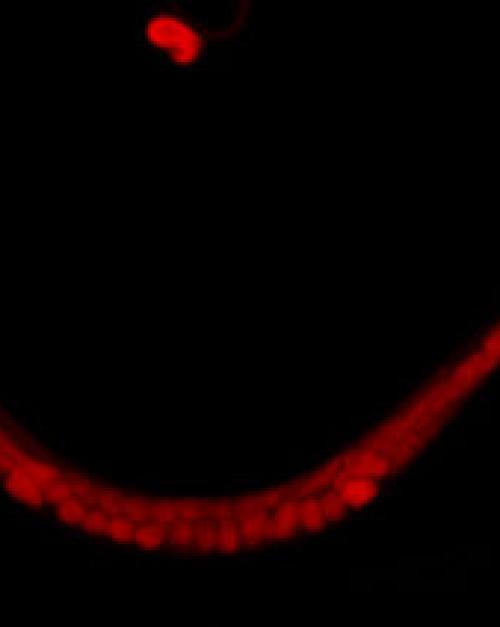A new study delves into the microscopic universe of proteins, unveiling an aspect of their existence that could hold profound implications for the understanding and treatment of a myriad of human diseases.
Through meticulous investigation using high-resolution mass spectrometry, researchers discovered critical patterns of fatty acid attachment in the model organism C. elegans, a microscopic worm that offers a window into fundamental biological processes. The study, “Amino acid and protein specificity of protein fatty acylation in C. elegans,” published Jan. 22 in PNAS.
Imagine proteins as tiny engines driving the machinery of life. Just as engines require modifications to optimize performance, proteins undergo ‘protein modification’ – a crucial process altering their function, location, and lifespan. A key player in this modification process is protein fatty acid attachment (‘protein fatty acylation’), akin to adding a specialized component (i.e., fatty acids) that allows proteins to anchor themselves to cellular membranes.
The researchers successfully mapped how different amino acids in proteins are specifically modified with various fatty acids.
“We were surprised to discover that different amino acids are modified with fatty acids from distinct biosynthetic pathways,” said senior author Frank Schroeder, professor of chemistry and chemical biology in the College of Arts and Sciences and a professor at the Boyce Thompson Institute. “This unexpected finding highlights the link between protein modification and specific fat metabolic pathways. It also serves as a foundation for further research into how protein function is affected by different fatty acids and their metabolism.”
Protein fatty acid attachment is a critical factor in diseases ranging from cancer to neurodegeneration, cardiovascular disorders, and even infectious diseases.
“What we learn from C. elegans contributes significantly to our fundamental understanding of this type of protein modification,” said Bingsen Zhang, a graduate student in the Schroeder lab and first author of the study. “The more we understand protein modification and function, the better we understand its central role for human health and disease.”
The study reveals the first example of abundant protein modification with branched-chain fatty acids – a finding that might have parallels in higher animals and humans, given their presence in our diet and production by gut microbiomes. The connection between diet, gut health, and protein modification could open new avenues in nutritional science, according to the researchers.
The research received support from the National Institute of Health and the National Science Foundation.
A version of this article first appeared on the Boyce Thompson Institute website.






